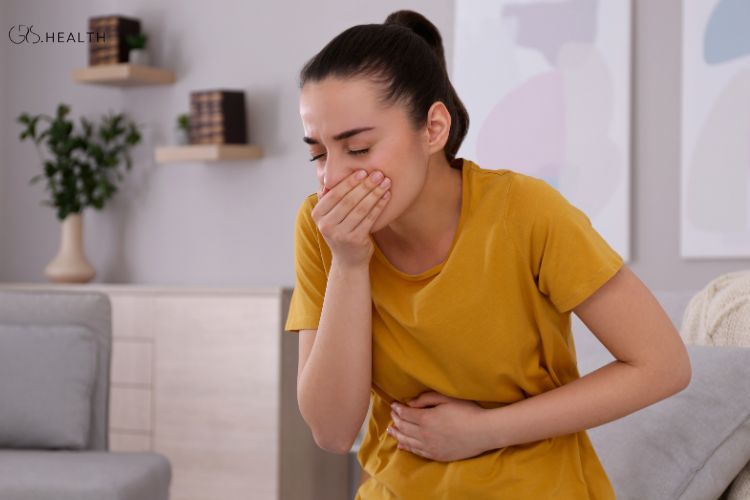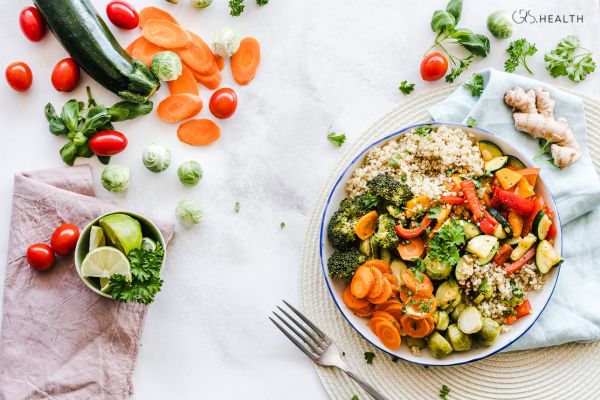Food poisoning, also known as foodborne illness, is one of the most frequent digestive problems worldwide. Almost everyone will experience it at least once. Understanding the signs of food poisoning, how it develops, and what to do about it can help you recover faster and prevent serious complications. This article explains the scientific background of food poisoning, describes its most common symptoms, and provides practical home remedies and prevention strategies, all in an easy-to-understand way.
What is food poisoning?
Food poisoning happens when you eat or drink something contaminated with harmful microbes such as bacteria, viruses, or parasites, or with toxic chemicals. These contaminants may enter food through improper handling, inadequate cooking, cross-contamination, or poor storage conditions. Once inside your body, the harmful agents irritate or infect your digestive tract, leading to inflammation and unpleasant symptoms.
According to the U.S. National Institute of Diabetes and Digestive and Kidney Diseases, food poisoning is an infection or irritation of the digestive tract caused by consuming contaminated food or drinks. Most cases are short-term and resolve without medical treatment, but severe infections or complications like dehydration may develop in vulnerable individuals.

How contamination happens
To understand why specific signs of food poisoning occur, it helps to know how contamination happens and what each type does to the body.
Bacteria: Organisms like Salmonella, E. coli, and Campylobacter can multiply in food or in your intestines, causing inflammation and damage.
Toxin-producing bacteria: Staphylococcus aureus or Clostridium perfringens may produce toxins either in the food before it’s eaten or inside the gut after ingestion.
Viruses: Norovirus and rotavirus infect the intestinal lining, leading to diarrhea, vomiting, and inflammation.
Parasites: Parasites such as Giardia or Cryptosporidium can come from contaminated water or food and cause chronic diarrhea and nutrient loss.
Chemical contamination: Exposure to pesticides, heavy metals, or cleaning products can irritate or injure the digestive system and other organs.
The incubation period—the time between eating contaminated food and feeling sick—depends on the pathogen or toxin involved. Some signs of food poisoning may appear within hours, while others take days or even weeks to develop.
Common signs of food poisoning
Although the symptoms vary with each cause, the most frequent signs of food poisoning are easy to recognize. Some people experience only mild discomfort, while others develop severe illness.
Digestive symptoms
Nausea and vomiting are early warning signs that your body is trying to expel harmful substances. Diarrhea, often watery or occasionally bloody, is another common feature. Cramping or abdominal pain occurs as the intestines contract to push out the irritant. Other possible digestive signs include loss of appetite, bloating, and excessive gas.
Whole-body symptoms
Because food poisoning activates the immune system, you might experience fever and chills as your body fights infection. Headache, fatigue, muscle aches, and general weakness are common. Dehydration, shown by dry mouth, reduced urination, dizziness, or dark urine, can develop quickly when fluid losses are high. In rare but serious cases, toxins can cause neurological effects such as blurred vision, numbness, or paralysis—this occurs in illnesses like botulism.
When symptoms appear and how long they last
The timing and duration of signs of food poisoning depend on the contaminant. Many bacterial toxins act fast, causing symptoms within four to six hours. Viral or parasitic infections may take a day or more to manifest. Typically, most mild cases last one to three days. However, some infections such as Listeria or certain E. coli strains can incubate for longer and cause illness lasting up to two weeks or more.
If your symptoms persist beyond three days, worsen over time, or include severe dehydration or blood in the stool, it is important to see a healthcare professional.
Recognizing severe signs of food poisoning
While many cases resolve at home, certain signs of food poisoning suggest serious illness that requires prompt medical care. The Centers for Disease Control and Prevention identifies the following warning signs:
Bloody diarrhea
High fever over 39 °C (102 °F)
Persistent vomiting that prevents fluid intake
Signs of dehydration such as dizziness, very little urine, or dry mouth
Diarrhea lasting more than three days
Infants, pregnant women, older adults, and people with weakened immune systems are particularly vulnerable and should not delay medical evaluation if these symptoms appear.
How doctors diagnose food poisoning
Doctors usually start by asking about your symptoms, recent meals, travel, and exposure history. In mild cases, no testing is needed because the illness often resolves naturally. However, in prolonged or severe cases, healthcare providers may order:
Stool tests to identify bacteria, viruses, or parasites
Blood tests to assess dehydration or infection markers
Imaging tests in rare cases to check for complications
These tests help identify the exact cause and guide treatment, especially if an outbreak investigation is required.

Treating food poisoning at home
For most people, food poisoning can be treated at home with rest, hydration, and gentle nutrition. The key goals are to replace lost fluids, prevent dehydration, and allow your digestive system to recover.
Rehydration
Dehydration is the biggest risk in food poisoning. Drink small, frequent sips of water, diluted fruit juice, clear soups, or oral rehydration solutions. These solutions contain the right balance of salts and sugars to restore electrolytes. Avoid alcohol, caffeine, and very sugary drinks because they can worsen fluid loss.
Rest and gradual eating
Rest allows your immune system to focus on recovery. Once vomiting stops, start with bland, low-fat foods such as toast, rice, crackers, bananas, or plain boiled potatoes. Avoid spicy, fried, or dairy-heavy foods until your stomach settles. Gradually reintroduce normal meals over the next few days as tolerance improves.
Over-the-counter medications
In mild cases, medications may help reduce discomfort:
Antidiarrheal drugs such as loperamide can slow bowel movements but should not be used if you have a fever or bloody diarrhea.
Anti-nausea medications may ease vomiting.
Pain relievers such as acetaminophen can reduce fever and muscle aches.
Always use these medicines according to directions and consult a healthcare provider before giving them to children or pregnant women.
When to see a doctor
Seek medical care if you cannot keep fluids down, have continuous vomiting, high fever, confusion, or signs of dehydration. A doctor might prescribe antibiotics in certain bacterial infections or provide intravenous fluids if oral intake is impossible.
Preventing food poisoning
The best way to avoid the signs of food poisoning is to prevent contamination in the first place. Simple hygiene and cooking habits dramatically reduce risk.
Clean, separate, cook, and chill
These four basic food safety steps are recommended by the CDC and World Health Organization.
Clean: Wash hands, utensils, and cutting boards before and after food preparation.
Separate: Keep raw meats, seafood, and eggs away from ready-to-eat items.
Cook: Heat foods to safe internal temperatures (poultry to 75 °C / 165 °F, meats to 70 °C / 160 °F).
Chill: Refrigerate perishable foods within two hours, or within one hour if it’s hot outside.
Handle high-risk foods carefully
Avoid consuming raw or undercooked meat, seafood, and eggs. Use pasteurized milk and juices, and be cautious with deli meats and soft cheeses if pregnant. Always reheat leftovers thoroughly, and discard any food that smells or tastes off.
Wash produce and use safe water
Rinse fruits and vegetables under running water and scrub those with firm skins. Use clean, safe water for washing and cooking. When traveling, drink bottled or boiled water.
Stay informed about outbreaks
Public health authorities frequently announce recalls and outbreaks related to contaminated foods. Staying updated can prevent accidental exposure.
Special cases and complications
Certain populations face higher risks and more severe consequences from food poisoning. Infants, elderly adults, pregnant women, and people with weakened immune systems may experience prolonged or complicated illness.
Some bacteria, such as Listeria, can cross the placenta during pregnancy and cause miscarriage or neonatal infection. Toxins from Clostridium botulinum can cause paralysis and require emergency treatment. Certain E. coli strains may damage the kidneys, leading to hemolytic uremic syndrome, especially in children. Prompt recognition of severe signs of food poisoning is critical in these cases.
Recovery and long-term outlook
Most healthy adults recover completely within a few days without long-term problems. The digestive tract regenerates quickly once the infection clears. However, some infections can lead to temporary lactose intolerance or irritable bowel-like symptoms for several weeks. Drinking enough fluids and eating balanced meals after recovery help restore normal digestion and energy levels.
Conclusion
The signs of food poisoning often include nausea, vomiting, diarrhea, stomach cramps, fever, and dehydration. They result from ingesting contaminated food or drink containing harmful bacteria, viruses, parasites, or toxins. While most cases resolve with home care, severe or persistent symptoms need medical attention. Prevention through safe food handling, cooking, and storage remains the most effective protection.
If you experience intense or lasting symptoms, especially in vulnerable groups, consult a healthcare professional immediately. Understanding the signs of food poisoning and acting quickly can make a major difference in recovery and overall health.
Sources
- CDC, Symptoms of Food Poisoning
- NIH / NIDDK, Food Poisoning: Definition & Facts
- Mayo Clinic, Food Poisoning: Symptoms and Causes
- WebMD, Food Poisoning Remedies and Treatment
- Cleveland Clinic, How Long Does Food Poisoning Last?










